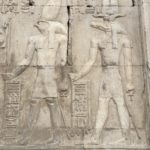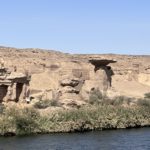http://mccallsnurseries.com/wp-json/oembed/1.0/embed?url=http://mccallsnurseries.com/
http://choicespregnancycentre.co.uk/ Today we continued cruising up the Nile, arriving late morning at the Temple of Kom Ombo, situated on a small hillside right beside the river, just past fields of sugar cane and corn. After lunch, we went ashore to explore Kom Ombo, a small agricultural town that is home to many Nubians displaced by the creation of Lake Nasser. We explored the ruined yet imposing Greco-Roman temple’s unique “double” design, with symmetrical halves dedicated to two different gods who were brothers. It has two entrances, two halls, and two sanctuaries. Maget told us the story of the two brothers who became estranged and were brought back together in unity and ultimately represented Lower Egypt and Upper Egypt.
The southern half of the temple is dedicated to the crocodile god Sobek, god of fertility and protector against the dangers of the Nile, while the northern part of the temple is dedicated to the falcon god Haroeris, or “Horus the Elder,” patron god of the pharaohs. Construction was begun by Ptolemy VI in the 2nd century BC and mostly completed by Ptolemy XII during the 1st century BC. Roman Emperor Augustus added the entrance pylon around 30 BC. From the forecourt (largely ruined by floodwaters of the Nile) two doors lead to the hypostyle hall containing scenes relating to Haroeris on the left wall and Sobek on the right. The many columns are carved with the lotus or lily of upper Egypt and the papyrus of the Delta. A series of halls and vestibules lead to each sanctuary. In one of the halls we found bas reliefs depicting a birthing chair to ease delivery of babies and of medical tools, The carved stones of the temple were held together by sycamore (known for its natural oils) dovetails.
The path out of the temple complex leads to the Crocodile Museum, which houses a collection of mummified crocodiles and ancient carvings. We returned to the ship and sailed onwards to the city of Aswan. The cruise to Aswan gave us another opportunity to enjoy the view of the West Bank.
Before dinner, we were treated to a port talk and a documentary film about the move of Abu Simbel to save it from the rising waters of Lake Nasser and the worldwide Saving Nubia Campaign.



























